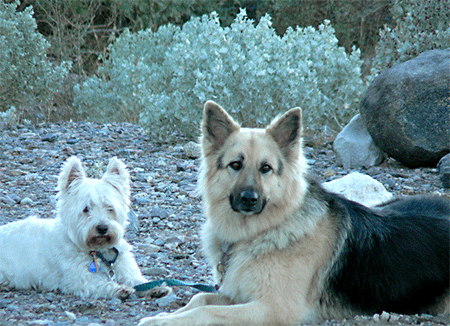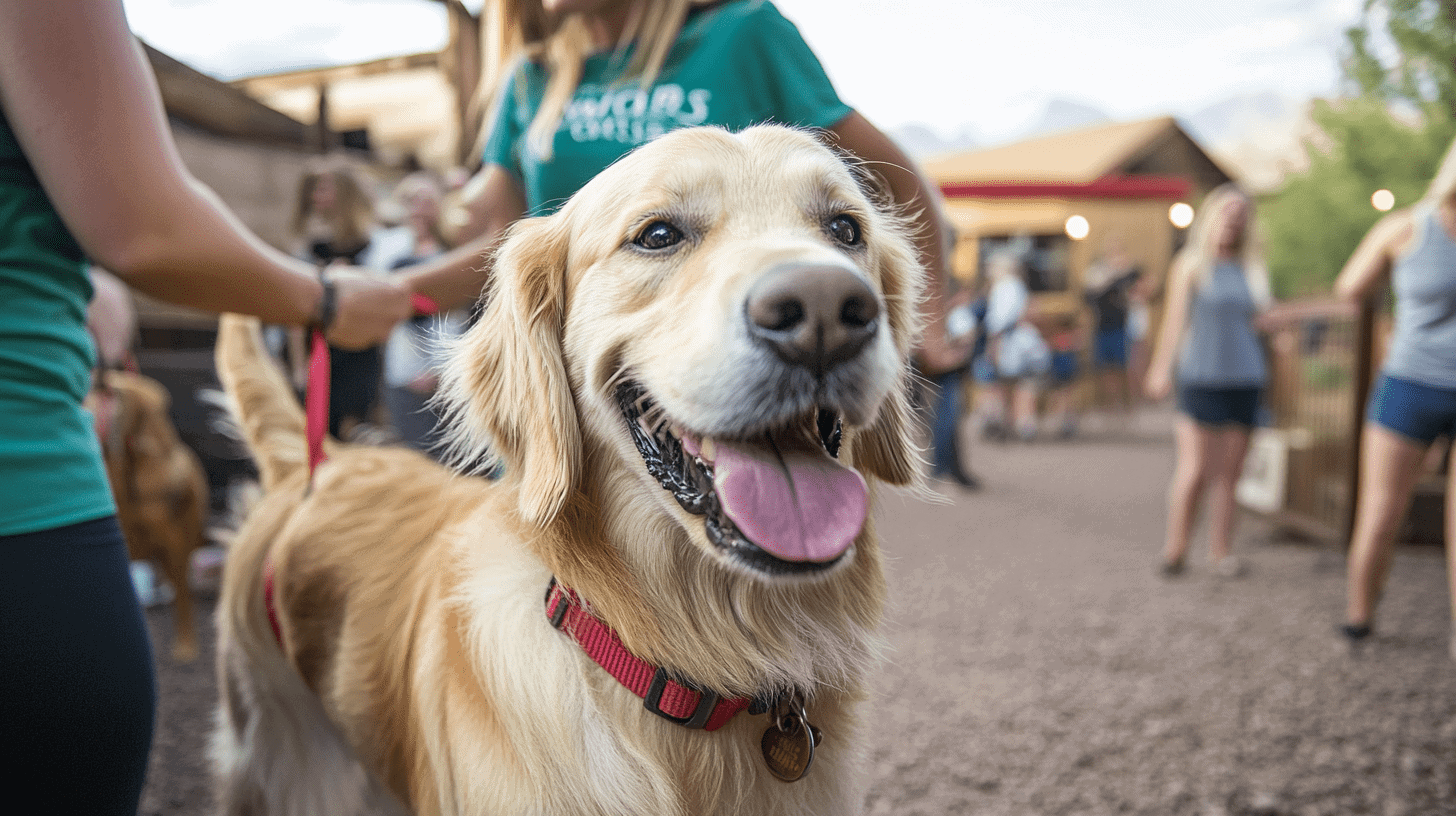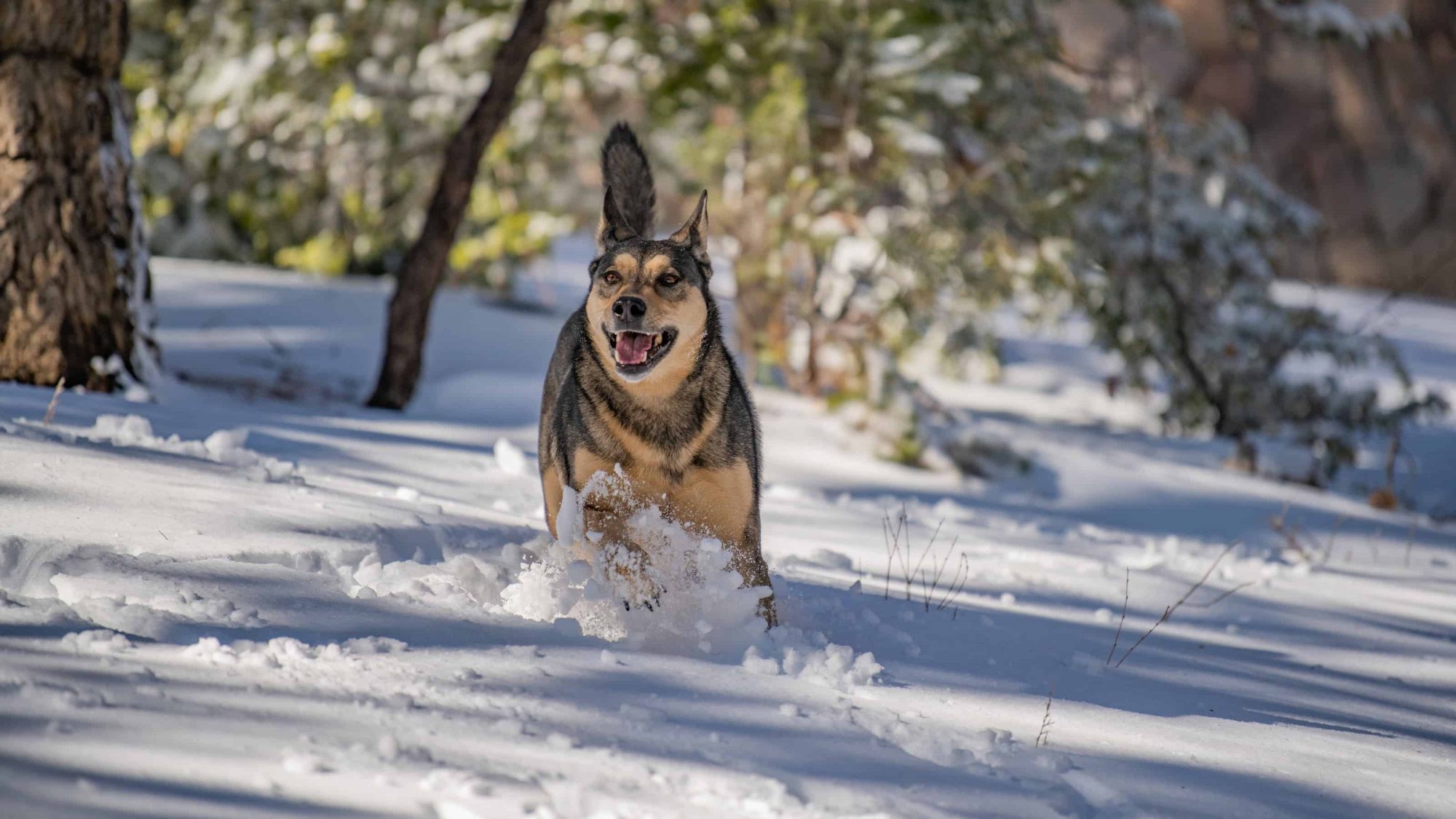
Obi and Lola in Death Valley. Photo Credit: Marc Smith (CC)
Death Valley National Park is one of the most colorful and breathtaking places on Earth—and winter’s exceedingly pleasant temperatures (60s in the daytime; 40s at night) make February a prime time to visit. Nowhere else on the planet will you see salt-crusted badlands 282 feet below sea level walled in by mountains 11,000 feet high. Geologic oddities abound, all encased in air so clear it seems like it could shatter. The valley’s human history, incorporating cowboys, Indians, burro-packing miners, outlaws, stranded pioneers, wealthy eccentrics and twenty-mule teams hauling borax, is equally rugged and colorful.
This is one of the best drive-through parks in the nation, with scores of fascinating sights visible from the road. While dogs are allowed in campgrounds, in developed areas and on or within 100 yards of paved roads, they’re not permitted on trails or boardwalks; neither are they allowed to be left in your car while you take a quick hike. But don’t let this stop you: within the national park are more than 700 miles of backcountry roads where the two of you legally can walk if connected by a leash. Two scenic roads recommended by the park service are Twenty Mule Team Canyon Road and Titus Canyon Road into the narrows.
When it comes to dog-friendy lodging, park visitors are in luck. Stovepipe Wells Village, one of the main lodging/refueling oases in the park, welcomes dogs at no charge in its clean if basic motel rooms. The adjacent RV park is dog-friendly, too, as is the nearby national park campground. The rustic Panamint Springs Resort near the park’s western boundary is another choice; it welcomes dogs in motel rooms, tent cabins, and campground sites.
A word of advice for Death Valley visitors: Bring quarters or pre-paid calling cards for use with pay phones. There’s no cell-phone reception in the park, and the few Internet hotspots (at visitor centers and hotels) aren’t that reliable.
But then, you wouldn’t be here if you didn’t want to get away from it all. Right?





